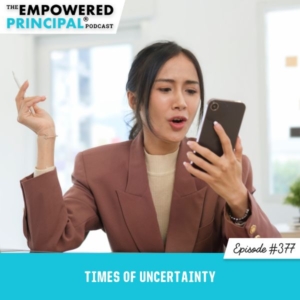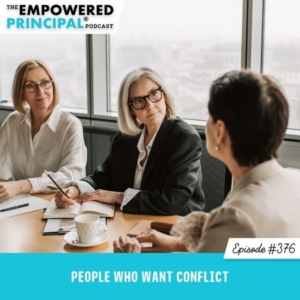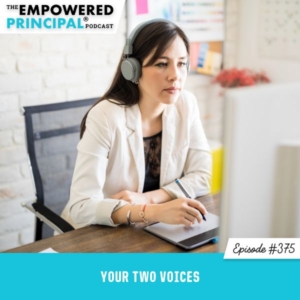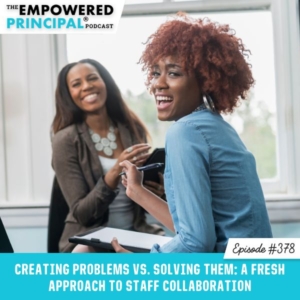
Do your teachers ever come to you with perceived problems they want your help solving? It’s easy to get caught up in trying to solve every issue that comes your way, but what if some of those “problems” aren’t really problems at all?
In this episode, I share a powerful coaching conversation I had with a principal who was struggling with a teacher collaboration issue. We uncovered some key insights about how we can sometimes create our own problems by making assumptions and trying to force everyone to fit into the same box.
I invite you to tune in and consider a different approach to teacher collaboration – one that allows for flexibility, diversity, and acceptance among our staff members. By embracing individual differences and empowering teachers to find creative solutions, we can create a more harmonious and effective school culture.
The Empowered Principal® Collaborative is my latest offer for aspiring and current school leaders who want to create exceptional impact and enjoy the school leadership experience. Join us today to become a member of the only certified life and leadership coaching program for school leaders in the country by clicking here.
What You’ll Learn From this Episode:
-
Why it’s important to have deeper conversations with staff members who come to you with concerns.
-
The value of allowing for flexibility and diversity in teacher collaboration styles.
-
How to empower teachers to find creative solutions that meet their individual needs.
-
Why forcing everyone to fit into the same box can actually hinder success.
-
The importance of modeling differentiation and accommodation for our staff, not just our students.
-
How to create a school culture that embraces individual differences and promotes harmony.
Listen to the Full Episode:
Featured on the Show:
- If you’re ready to start the work of transforming your mindset and start planning your next school year, the Empowered Principal® Collective is here for you. Click here to schedule a consult to learn more!
- For a free call to review your year, get in touch with me: Facebook | Instagram | LinkedIn
- Participate in The Summer of Fun by joining us in The Empowered Principal® Facebook Group, Emotional Support for School Leaders, today!
- Sign up for The Empowered Principal® Newsletter
- Podcast Quick-start Guide
- Schedule a 15-minute Q&A Call with me
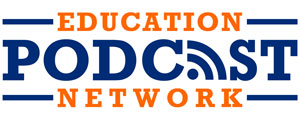
Full Episode Transcript:
Hello empowered principals. Welcome to episode 378.
Welcome to The Empowered Principal® Podcast, a not so typical educational resource that will teach you how to gain control of your career and get emotionally fit to lead your school and your life with joy by refining your most powerful tool, your mind. Here’s your host certified life coach Angela Kelly.
Well, good morning, my Empowered Principles! How are you feeling today? Here we are, end of March. You’ve made it through the longest month of the spring. So congratulations. I know that March can feel like a very long month. There’s a lot of days in March. There’s a lot of pressure in March.
There are a lot of decisions to be made in March, and you, my friend, are handling them. And I want to celebrate you. You only have two to three months to go, depending on what part of the country you live in, what your school district’s timelines are. But some of you are done at the end of May, and some of you are done at the end of June. So I am rooting for you.
So for those of you who have two to three months to go, make sure you’re planning out the last eight weeks of the school year. And be sure, please be sure to be planning out your Summer of Fun Challenge. And for those of you who are on Facebook and you like to have fun, if you are both of those things, come on in to the Empowered Principal Facebook group where we do our Summer of Fun Challenge. I do lots of fun prizes and encourage people to get out, have fun, and to be inspiring to other people. And really what we’re doing is we’re raising the bar to see how much fun we can have as school leaders during the summer and during the entire school year, I would venture to add.
So congratulations on making it through March Madness. I know that it can be a challenge. So as we close out March of 2025, I just want you to notice, we’ve already been through January, February, and March. We are a quarter of the way through the calendar year. And I say that to bring up awareness and to help you realign with who you are and who you want to be and how you want to feel and what you want to experience. It’s been a wild ride in 2025 and I want to create that awareness.
And every week you listen to this podcast, I want you to be thinking about, with intention, the experience you want to have in your school leadership experience, in your career, with your children, your relationships, your relationship with time, your relationship with your money, your relationship with everything around you. But ultimately, the life you want to live, the life you want to lead, the legacy you want to leave behind.
And I don’t mean being some famous person when I say legacy. I just mean your personal legacy, what you value, what you cherish, how you’re going to be remembered, creating those memories with your loved ones while you’re here on the planet, while they are here on the planet. We’re not ever guaranteed another day, another year. So why not make the best of this day and cherish this day and appreciate this day?
So as we’re wrapping up the first quarter of 2025, look back at the last 90 days. Look at your last plan. What did you celebrate? What did you learn? Where did you grow? What accomplishments did you create? What experiences did you have? Who did you connect with? Celebrate your life, acknowledge it and enjoy it.
Okay. Now this podcast is going to be pretty quick because what I want to do is show you how we can create problems for ourselves. So I was coaching one of my EPC clients. Once a month, you have access to a free 30 minute one-on-one session with me as a part of being in the Empowered Principal Collaborative. So you get the best of both worlds. You get weekly coaching, you get all the collaboration, you get the connection and insight from like-minded people.
But then you also, if you have something that’s churning at you or something that’s private or confidential, once a month, every EPC member has access to a 30-minute one-on-one private session with me as a part of the membership. Now, this client has been working with me for several years as a one-on-one client. And when I opened EPC, she did both for one year and now she’s an EPC exclusively. And she scheduled a one-on-one session with me and it caught my attention because this client is pretty savvy at coaching herself. And I know that when she does schedule a one-on-one session, there’s something going on for her.
So we connected. I asked her what was going on. What did she want to coach on? And she felt very distraught. The way that she introduced her problem was that she was going to have to have a hard conversation with a teacher who was very set in her ways and is a very good teacher. So the principal was feeling conflicted because she felt she had to have a difficult conversation, a very uncomfortable conversation with a teacher who she saw as being very set in her ways, but also being a brilliant teacher.
And I asked her, if this teacher is brilliant, what’s the hard conversation you’re having with her? And she said, it’s about collaboration. This teacher has extremely good interactions with children. She gets results. Her classroom’s on point, like teaching wise, we have no problem. But in the principal’s mind, the way that the teacher collaborated was a problem.
And so she felt like she had to address this problem. So stay with me here, because if you have a person like this on your campus and you’re like, they’re such good teachers, but dot dot dot, they’re not good at relationships with adults or they, whatever they do. If you’re in this boat, which trust me, I’m assuming, and I know it’s an assumption, but I’m presuming that there are many of you in this boat because you have people who are really good and this thing or really good, but this thing. Okay. Stick with me here.
So I listened to the story. I allowed my client to brain drain all of her story about what was going on and what was wrong and why it was a problem. And I can’t share the details, obviously, with you, but the gist of it was the colleague, this teacher, had been in a gen ed classroom and now she’s an intervention teacher and there was multiple intervention teachers, and the colleague of the teacher wanted to collaborate differently than she currently was with her colleague and she felt that she was being met with resistance.
So hear me out. The person that the principal had planned to have a difficult conversation with was a person who’s an excellent teacher, but whose identity, based on other people’s opinions, was a difficult person to get along with. Now, it could be true. I don’t know the person, which is great because I can stay super neutral.
So this person perhaps does not collaborate in the way that people would expect, or maybe she does engage with adults differently than children. We oftentimes do. So when we got down to the core of what was going on, I said, what’s the real problem here? Is the real problem that teacher needs to collaborate in the way that the colleague wants her to? Is that the problem? Is the problem that the colleague doesn’t feel connected or supported to her peer? Is that the problem? Is the problem that because somebody came and said something to you, now it’s a problem that you have to solve and you feel an obligation or a duty to solve it for them? What is the actual problem here?
And I want you to hear this out because there are so many things that come our way. And adults will come up to you and say things.
For example, I was coaching another person yesterday and she said, “Well, I had a teacher come and tell me that another teacher came in late.” And again, my question is, okay, the person came and told you something, which that’s fine. They have the right to tell you that. You can say thank you. But do you have a problem as the principal with the person who came in late? Maybe you do, and maybe you address that. But isn’t it interesting that somebody came to you and told you that because that person also has a problem.
And so when they come to you to tell you this person came in late, that person clearly has a problem with the person coming in late. It’s not just the person who came in late, it’s the person who tattled or told on the other person. So what I coached and mentored this newer principal on was, “Isn’t it interesting that this person would come and tell you that somebody’s coming in late.”
So my response to that person, if I were principal, I would say, thank you so much for sharing that. I really appreciate you being honest with me. And how does it make you feel that this person’s coming in late? Is this person’s tardiness impacting you directly in any way? And the reason I wanted to know that is because I want to ensure that if I address this, that I understand the impact of the other teacher’s tardiness.
Is there something about the tardiness that is directly impacting you? And that creates awareness for the teacher who’s coming to tell you, why did I come and say this? Was I coming to tell? Was I coming to get attention? Was I looking for connection with my principal? Was I just tattling? Was I concerned for the person, but I don’t have a relationship with them? And I’m wondering, maybe something happened? Are they okay? But I don’t feel comfortable going to them.
It creates awareness around the behavior of the person who’s telling. So there are times when people come to us and tell us, this is what’s going on. This is how I feel. I saw this, I overheard this. They’re sharing it with you. And you can be grateful that they’re sharing it with you. But it’s interesting to consider, is it really a problem? Is it this person’s problem? Like, where does the problem lie?
Oftentimes what happens without awareness is somebody comes and says, my colleague is not collaborating with me in the way that I want. She’s not sitting down with me during PLC time and she is not collaborating. And you need to know that. And then you’re like, okay, thanks for sharing with me. How are you feeling about it? Well I’m frustrated, I want to collaborate with her. I’m used to collaborating with the other team I used to be on collaborated and this team doesn’t.
Okay. That’s good to know, but notice how the person coming to you is the person you want to engage in conversation with. What exactly is the problem? Why does it bother you? How is it impacting you? What is it that you see? What do you think this obstacle is in the way of collaboration. What do you think the solution is?
The conversation isn’t, oh, thanks for letting me know and you go now and talk to the other person who has no idea what’s going on perhaps, or maybe they do. But do you see how there is an opportunity for conversation to get to understand the person who came to you about their thoughts and their feelings and what it is they’re looking for and their perception and what they think the problem is and what they think the obstacle is and what they think the solution will be that is an opportunity for connection and conversation with that person before you ever go off running to solve it.
Because here’s what’s happening. Somebody tells you something, you take it for truth, you take it at that face value, and then you go and you try to fix it. You try to change somebody else so that the person who came to you can feel better. Right? It’s the same thing. If a student were to come up to you and say, you know, Sally hurt my feelings. Okay. Tell me more. What did Sally do? What did Sally say? How did it impact you?
You would talk to the child who’s distressed about the circumstance that occurred before you would go and just say, okay, go get Sally and let’s have this conversation. Now, some people might do that, but I’m inviting you into the idea that there may not even be a problem.
So back to the story of my client, when we dug down and I asked her, okay, the teacher that you were considering this difficult conversation with, she gets great results, right? She kind of keeps to herself. So maybe she does find adult relationships a little more taxing for her, a little more challenging for her. That could be true. She said, yeah, I’ve had multiple experiences myself and I’ve heard other people say that she can be a challenge to work with.
I said, but she kind of sticks to herself. She gets her job done. She’s prepared, she’s planned. But ultimately, she has an excellent relationship with kids and she gets the job done. So where is the problem, the actual problem? And we spent about 30 minutes dialing down and it became apparent to the principal, oh, I actually don’t have a problem with her. She’s not, to my knowledge, not harming anybody. She’s not harming children. She’s not negatively impacting anybody. She’s just a teacher who tends to keep to herself. She tends to prep by herself.
And it’s the colleague who is feeling the dissonance, like the discord between the two of them. So let’s talk with that teacher because for her, that’s the problem. The teacher who’s out doing her thing and maybe isn’t collaborating in the way that it should look like we all have, you know, in PLCs, this is how it should look and this is how people should talk and this is how people should collaborate.
But if we are truly in the business of human development, in the business of people, and we’re expecting teachers to embrace, allow, and account for differences, diversity, equity, accommodations. Why would we not model that in our staff? Does every single student need to fit the square? Does everybody need to fit in the box? Or do we differentiate for students? For kids who really struggle with social-emotional skills or really struggle to connect and to relate in the exact way, they might not be able to think pair share or to partner up or to work in a group. Not everybody is designed exactly the same.
And so what we do is we understand children, we get to know them, we get to understand them, we get to understand their triggers, and then we create a space that allows them to still feel safe in their own skin, even if they have neurological differences, biological differences, physical differences, mental differences, emotional, social differences. We create a space that accommodates and allows for flexibility. Can we do this on our staff as well? Can we allow our staff members to be different?
Maybe third grade collaborates differently than fifth grade or first grade. But if it’s working for them, we’re good. Now in this case, you have somebody who’s completely happy doing minimal collaboration and somebody who has a desire for more. So for the person, if they’re not causing harm and they’re not doing anything wrong, you can discuss with them, like, how do they feel about collaboration and what’s working for them and what’s not. But also with the person who doesn’t feel like fulfilled or satisfied, is there another way that that fulfillment can be nourished?
And in this case, we’re talking about intervention. So intervention, it might not look the same as gen ed collaboration or PLC time, might look a little different. And if this person in the intervention position isn’t getting the full collaborative experience she wants with this one colleague, might she be able to fulfill that with someone else, with another colleague? Maybe she can push into grade levels. Maybe she can work with the special ed team. Maybe she can work with anybody on the campus. Collaboration doesn’t exactly have to look like one thing.
Now, I know some of you are going to say, well, she needs to be held to the same exact set of standards as everybody else. And that is an option. You can certainly say, this is the standard, this is the expectation, you must sit down and collaborate. But in the conversation I had with my client, what she discovered is that forcing PLC time, collaboration time to look exactly the same in every single grade level and every single department on her campus might actually be a hindrance to their success.
And so she wanted to take into account is forcing people to look just one way and do it just one way is making people sit down for a certain amount of time and talking in a certain way and taking notes in the exact way. Is that level of management, is that really creating the best results?
So this principal decided I’m going to let the results speak for themselves and I can work with this team to see if we can create more connection in a way that’s authentic for everybody involved, not forcing one person to do it the other person’s way, or one person to have to give up what they want, but living in the land of and helping them collaborate and noticing that one, is this actually a problem?
And two, if somebody’s feeling there’s a problem, who are we actually addressing, being mindful of that, and working with that person to come up with multiple solutions. Because when somebody’s in discord, disharmony, they feel that there’s a problem and they come to you, what’s happening is they don’t feel the way they want to feel about something, whether it’s collaboration or a colleague or whatever. The goal for you as they come to you is, how do they want to feel? And then what multiple options might create and generate that feeling?
So in this case, if that person feels disconnected from her colleagues, might she be able to connect with other colleagues to get the sense of fulfillment and collaboration that she craves? How can she fulfill that need for herself and not need this one person to fulfill that need for her? Especially if the other person isn’t intending to cause harm or discord, they’re just uncomfortable or they maybe have, you know, some neurological or some biological, who knows? There are reasons that people avoid different kinds of collaboration, different kinds of contact.
We want to be respectful and mindful of that. So it could be an opportunity to collaborate with this team and also empower your teachers to find other ways to fulfill their needs so that it’s a win-win. We don’t need to force somebody, particularly an adult who may be a little more adverse to adult connection or a ton of adult stimuli, this communication and connection. If that is overwhelming to some of your adult staff members, let’s be open to allowing for flexibility, diversity, allowance, embracing acceptance, embracing flexibility in how we approach teaching, learning, planning, collaboration, conversation. Something to think about.
Have a beautiful week. Happy March. I hope you enjoyed it. We’re bringing up April. Come on in to EPC. If you are a brand new leader, oh my goodness, get in EPC right now so we can get you started. We can get you planning. We can get you transitioning. EPC is the bomb you guys. I could not love it more. The only thing that would make me happier is all of you coming to join us. It is so, so fun and so worth it. I love you guys. Have an amazing week. Talk to you soon. Bye!
Thanks for listening to this episode of The Empowered Principal® Podcast. If you enjoyed this episode and want to learn more, please visit angelakellycoaching.com where you can sign up for weekly updates and learn more about the tools that will help you become an emotionally fit school leader.
Enjoy The Show?
- Don’t miss an episode, follow on Spotify, Apple Podcasts or RSS.
- Leave us a review in Apple Podcasts.
- Join the conversation by leaving a comment below!





